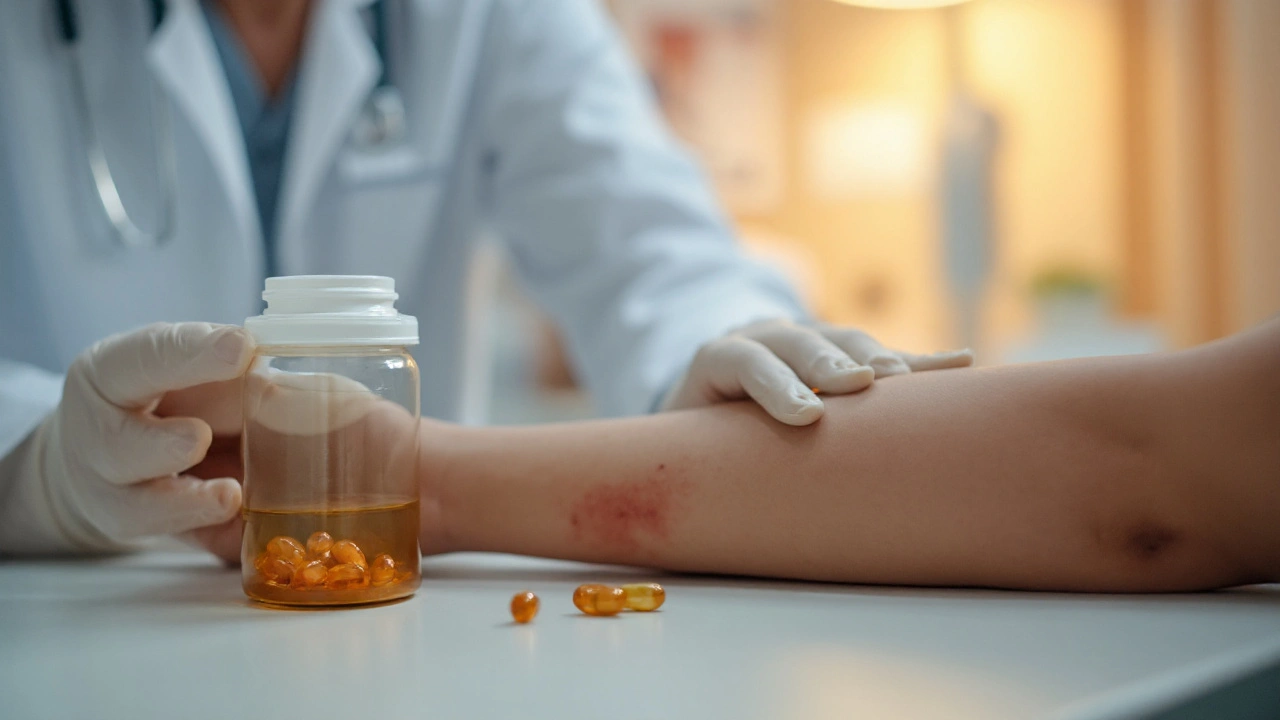Starting a new antibiotic can feel like a gamble. Tetracycline works well for acne, infections, and a few tropical diseases, but it isn’t a free‑pass. Knowing what your body might do when you take it helps you stay in control and avoid surprise trips to the doctor.
The most frequent complaints are stomach‑related. Expect mild nausea, a vague tummy ache, or a little diarrhea. These usually fade after a few days as your gut gets used to the drug. Drinking plenty of water and taking the pill with food can cut down the discomfort.
Another hallmark of tetracycline is that it can make your skin and eyes extra sensitive to sunlight. Even a short walk outside might leave you with a mild sunburn or a rash that looks like a mild allergic reaction. If you’re planning to be outdoors, slap on sunscreen with at least SPF 30 and wear a hat.
While most people only get the mild stuff, a small group experiences more severe problems. One red flag is a sudden, intense rash that spreads quickly or blisters. This could be a sign of Stevens‑Johnson syndrome, a life‑threatening skin reaction that needs immediate medical care.
Another warning sign is swelling of the face, lips, tongue, or throat, which points to an allergic airway reaction. Trouble breathing, wheezing, or a tight chest are emergencies—call 911 without hesitation.
Rarely, tetracycline can mess with your liver or kidneys. Dark urine, yellowing of the skin or eyes, persistent nausea, or unusually tired feeling could mean your organs are under strain. If any of these appear, contact your doctor right away.
One more quirk: tetracycline can permanently stain teeth in children under eight or during pregnancy. That’s why doctors avoid prescribing it to kids and expectant moms. If you’re in either group, ask for an alternative antibiotic.
Finally, tetracycline can interact with other meds. Calcium‑rich foods, antacids, or iron supplements can lower its effectiveness, while blood thinners like warfarin may become riskier. Keep a list of everything you take and share it with your prescriber.
So, how do you manage the side effects you do get? Take the pill exactly as directed—usually twice a day with a full glass of water. Avoid lying down for at least 30 minutes after swallowing to keep the tablet from irritating your throat. If nausea hits hard, a small snack (like crackers) can help settle the stomach.
Monitoring is key. Write down any new symptoms, their timing, and severity. If something feels off after the first few days, call your pharmacy or doctor for advice before stopping the medication on your own.
Bottom line: tetracycline is a solid antibiotic, but it comes with a predictable set of side effects. By staying aware, protecting yourself from sun, staying hydrated, and watching for red‑flag symptoms, you can ride it out safely and get the infection cleared without drama.

A practical guide to using tetracycline for skin infections, covering how it works, dosage, safety, resistance and comparisons with other antibiotics.
View more